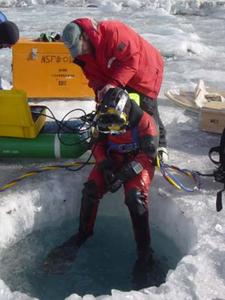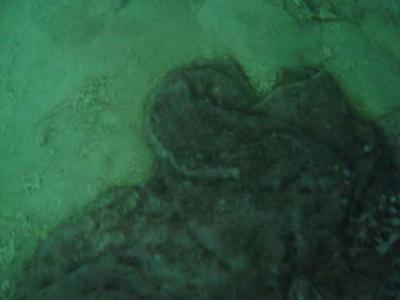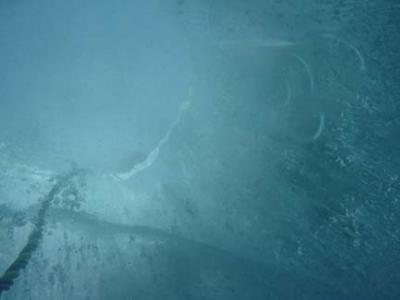15 November, 2004
Diver in the hole!
Temperature: 36 * F (in sun with no wind, otherwise... 20 *)
Location: Lake Hoare
There are times when one must step just a bit out of ones comfort zone in order
to risk new experiences. Today offered one of the most amazing moments for me;
I went diving in Lake Hoare! What a spectacular dive. The solitude, the
sounds, and the sense of adventure stimulated senses that are often kept “in
check” by staying within my comfort zone.
First, there was “the tube.” The tube is the nick name given to the dive hole;
the ice is about 15 feet thick. This was the bit I was the most apprehensive
about, and offered the biggest push to my comfort zone. Prior to the dive, I
wondered if I would feel claustrophobic while passes through the tube. I had
been told by many divers that “the tube” is psychologically the hardest part to
overcome. I must say, I was pleasantly surprised. As soon as I hit the water,
I was mesmerized by the absolute beauty of the tube; I could have spent a
considerable time just looking into the ice. I could see quite a distance
horizontally into the ice; it was stunning.
After descending through the tube, I passed the transition zone where the lake
ice ends and the lake water begins. There is a distinct, and perfectly smooth
separation between ice and water. The contrast between the rough surface and
smooth bottom of Lake Hoare ice is fascinating. It’s as if the harshness of
Antarctica that batters the surface is transformed into the soothing smoothness
of the lake ice bottom. There is a tranquility hiding beneath the Antarctic
ice.
In order to explore the wonders beneath the ice, several safety rules must be
followed. The divers are tethered to the hole, so there is no chance of losing
ones way. We are using a surface supply system, which means that we do not
need to carry SCUBA tanks on our backs. Instead, the air is pumped to the
diver through a long umbilical hose from two huge air tanks that are positioned
on the ice. The air hose doubles as a tether to the hole. The diver must,
however wear a “pony bottle” on their back. A pony bottle is a back up air
supply in case something goes wrong with the surface supply. Pony bottles
typically supply enough air for about 5 minutes; depending on how deep the
diver is when the bottle is turned on.
On the surface, more safety features are in place. There is a back up diver all
suited up and ready to go into the water if the primary diver gets into
trouble. The back up diver is wearing a SCUBA tank with two regulators hanging
from the system. One regulator is for the back up diver to use, and the second
is to give to the diver in trouble if needed. There is also another tender on
the surface with a radio to call for help if needed. We also have an oxygen
tank on the surface in case someone needs oxygen after a dive.
Today was a chance for me to get exposure to the underwater world of Antarctica.
Tomorrow we will focus on the science that is going on in the lakes. By
stretching my comfort zone just a little bit, I was rewarded with experiences
to last a life time!

1. Rob Robbins, the dive coordinator here in Antarctica, secures my dive helmet.

2. Me in the "band" helmet.

3. Diving in!

4. Me taking a moment to get situated before my descent.

5. Heading down!

6. Gone!

7. Some of the Algal matt on the bottom of the lake. I'll be telling you more about this algae in the next few weeks.

8. Air bubbles from my exhaled breath trapped underneath the ice; they are fun to play with!

9. Looking UP the dive hole from below. If you look carefully, you can see the edge of the surface!
Contact the TEA in the field at
.
If you cannot connect through your browser, copy the
TEA's e-mail address in the "To:" line of
your favorite e-mail package.
|
